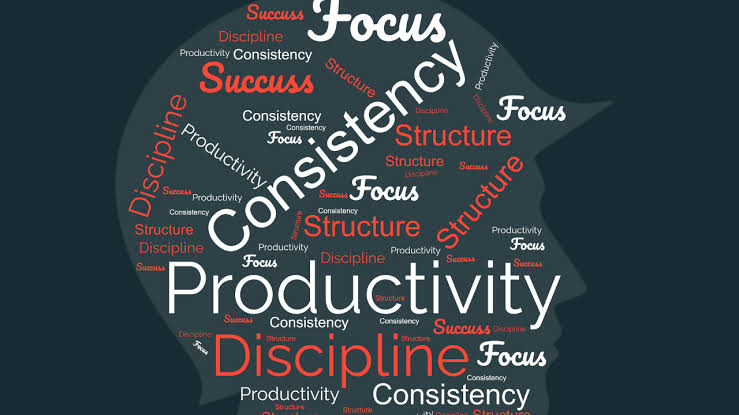Remote work has transformed the modern workforce, offering flexibility, freedom, and new opportunities for professionals across the globe. However, with this flexibility comes a unique set of challenges, particularly in managing time effectively. Without the structure of a traditional office environment, remote workers must take extra steps to stay productive and maintain a healthy work-life balance.
Effective time management is not simply about checking tasks off a list—it’s about aligning your daily activities with your larger goals, minimizing distractions, and using tools and strategies that keep you focused and organized. In the context of remote work, where the lines between personal and professional life often blur, mastering time management is essential.
Establishing a Structured Daily Routine
One of the most powerful ways to take control of your time is to build and stick to a consistent daily routine. Start by setting clear work hours, and treat your remote schedule with the same discipline as you would in a traditional office.
Designate specific blocks of time for focused work, meetings, and short breaks. Begin your day with a clear morning ritual—whether it’s a short walk, journaling, or a healthy breakfast—to mentally transition into work mode.
A well-defined routine prevents your workday from bleeding into personal time and helps train your brain to stay focused during working hours.
Creating a Dedicated Workspace
Your environment heavily influences your productivity. A designated workspace, whether it’s a separate room or just a specific corner of your home, signals to your brain that it’s time to focus.
Keep your workspace organized and free from distractions. Invest in a comfortable chair, adequate lighting, and any tech accessories that enhance your workflow. Having a physical boundary for work helps create mental boundaries as well, making it easier to log off when the day ends.
If you live in a shared space, communicate your work schedule with those around you to minimize interruptions and set respectful boundaries.
Setting Daily Priorities and Goals
Without a clear roadmap, it’s easy to fall into the trap of busywork—tasks that keep you occupied but don’t contribute to your long-term goals. Start each day by identifying your top three priorities. These are the tasks that, if completed, will make the day feel successful.
Use techniques like:
- The Eisenhower Matrix – Categorize tasks by urgency and importance.
- The Ivy Lee Method – Write down six tasks the night before and rank them by priority.
- Time blocking – Allocate specific chunks of time on your calendar for each task or project.
Having a visual plan for your day not only improves focus but also gives a sense of accomplishment as you progress through your list.
Avoiding Common Distractions
Remote workers are especially prone to distractions—social media, house chores, TV, and even the temptation to nap can derail productivity. Identifying your biggest distractions is the first step toward eliminating them.
Here are a few strategies:
- Use website blockers like StayFocusd or Freedom during work hours.
- Turn off non-essential notifications on your phone and computer.
- Set timers using the Pomodoro Technique (25 minutes of work followed by a 5-minute break).
- Schedule household tasks for after work, not during work hours.
Discipline and awareness are key. Small distractions can add up and steal hours from your day if left unchecked.
Leveraging Productivity Tools
The right tools can make remote work more efficient and collaborative. Explore apps and software that support your workflow, communication, and project management.
Some popular choices include:
- Trello or Asana for task and project tracking
- Notion for organizing notes, databases, and schedules
- Slack or Microsoft Teams for team communication
- Google Calendar for time blocking and reminders
- Clockify or Toggl for time tracking and productivity analysis
Use technology to streamline repetitive tasks, manage your workload, and stay accountable to deadlines.
Managing Communication and Meetings
Remote work often comes with an overload of meetings and constant communication, which can become a major time drain. To manage this:
- Set clear boundaries around meeting times.
- Use asynchronous communication (like email or recorded updates) when possible.
- Combine check-ins to reduce unnecessary calls.
- Always have a clear agenda before any meeting.
Reserve peak productivity hours for deep work and schedule calls during less focused times of the day, such as late mornings or afternoons.
Taking Breaks and Managing Energy
Working non-stop may seem productive, but it often leads to burnout. Short, intentional breaks improve concentration, creativity, and overall productivity. Step away from your screen every hour—stretch, walk, or do a quick breathing exercise.
Consider using the following:
- The 90/20 Rule – Work for 90 minutes, then take a 20-minute break.
- Pomodoro Breaks – After four 25-minute Pomodoros, take a longer 30-minute rest.
- Midday reset – A short walk, lunch away from your desk, or 15 minutes of quiet time can refresh your focus for the second half of the day.
Protect your energy just as much as your time—it’s what fuels productivity in the long run.
Balancing Work and Personal Life
Remote work can blur the lines between professional responsibilities and personal life, leading to overworking or constant context switching. To combat this, set firm work hours and unplug at the end of your day.
Create evening rituals that signal the end of work—such as shutting down your computer, going for a walk, or switching into home clothes. Use separate devices for work and leisure if possible to create psychological distance.
Remember, balance isn’t about equal time—it’s about intentional time. Make space for rest, hobbies, and time with loved ones to recharge your creativity and maintain overall well-being.
Reviewing and Adjusting Regularly
Time management is not a one-time fix—it requires ongoing reflection and adjustment. At the end of each week, review what worked well and what didn’t. Ask yourself:
- Which tasks took more time than expected?
- What distracted me the most?
- Did I accomplish my top priorities?
Use this feedback to refine your routine, eliminate inefficiencies, and continually improve your process.
Conclusion
Time management is at the heart of successful remote work. With discipline, structure, the right tools, and regular self-assessment, remote workers can take control of their schedules, boost productivity, and maintain a healthier work-life balance.
By treating time as a valuable resource and aligning your work habits with your personal goals, remote work can be not just efficient—but deeply fulfilling.



